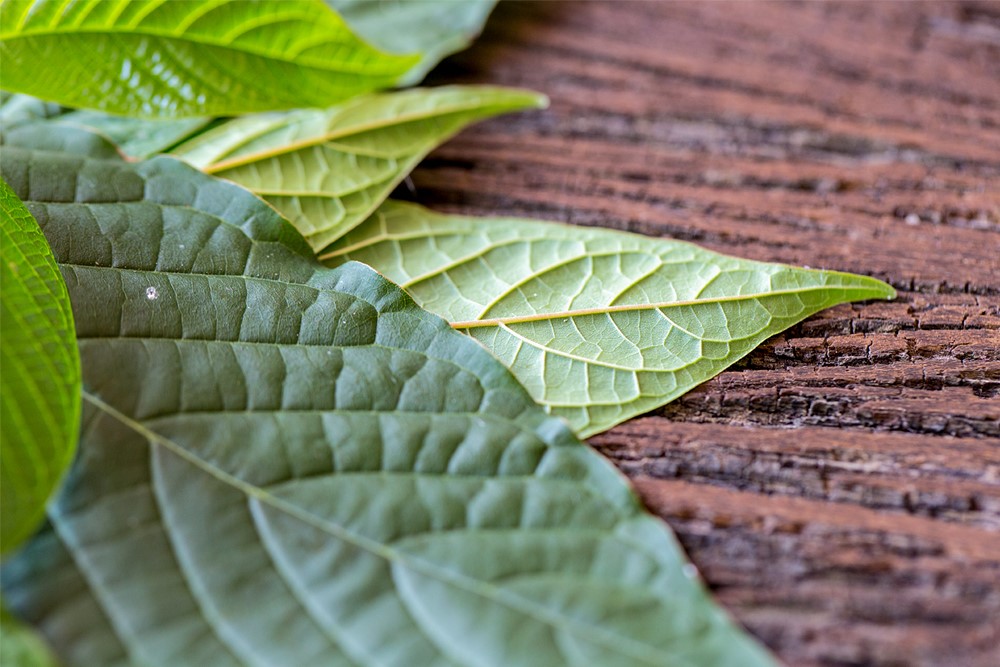
Have you ever wondered about edible trees? With so much emphasis on chemical medicine these days, it’s easy to forget that humans once relied entirely on wild plants to alleviate their health-related ailments. And in fact, eating the leaves of certain trees can have a profound impact on the health and wellness of our bodies and minds. Whether it’s edible tree leaves that contain myriad sources of vitamins and minerals, or it’s a medicinal tea that simply helps to calm your nerves, there’s so much to know about these wild edibles!
While edible plants have a wide variety of medicinal purposes, it’s important to note that the young leaves of a tree are often considered to be the most edible leaves – higher in nutrients, and offering better flavors.
So without further adieu, let’s take a look at our picks for the Top Seven Tree Leaves You Can Eat!
#1: The Cranberry Hibiscus
- Scientific Name: Hibiscus acetosella
- Common Uses: tea; raw and cooked leaves
- Where It Grows: warm, tropical climates
In the category of edible trees, hibiscus takes a unique place: almost all species of hibiscus are entirely edible! But one, in particular, takes the (floral) cake: the cranberry hibiscus. The young leaves of this tree possess a tart, astringent flavor and can be eaten either raw or cooked.
What makes these leaves so special? Well, hibiscus leaves contain antioxidants like flavonoids and proanthocyanidins. Because of this, these edible leaves can be used for some diuretic (i.e., urinary) medicinal purposes.
Throughout parts of Asia, India, and even Northern Africa, raw hibiscus leaves and hibiscus tea were used traditionally to treat all manner of conditions. Some of these conditions include cough, low blood sugar, high blood pressure, gallbladder attacks, and even skin diseases.
#2: The Moringa Tree
- Scientific Name: Moringa oleifera
- Common Uses: tea; raw leaves
- Where It Grows: semiarid, tropical, subtropical climates
Want an action-packed medicinal tea? Well, the leaves of the moringa tree might hold the answer. Moringa tea has been used for centuries as a potent tea base because it contains high concentrations of calcium and phosphorus:
- Calcium helps maintain healthy bones and is also considered vital for the proper functionality of the heart, muscles, and nerves.
- Phosphorus helps build strong teeth, regulates how your body stores and uses energy, and is considered a post-workout analgesic that aids muscle relaxation.
These edible plants don’t just make great tea, either: the moringa tree offers 100% edible tree leaves. For centuries, humans have been eating the leaves for their anti-inflammatory properties. These leaves are known to improve circulation and offer not one, not two, but 46 healing antioxidants!
#3: The Linden Tree
- Scientific Name: Tilia
- Common Uses: tea; raw and cooked leaves
- Where It Grows: temperate climates
Also known as the lime tree (depending on where you live), the linden tree is one of the more popular edible trees because of its lettuce-like taste. The edible leaves of the tree can be used as a salad base, almost mimicking the feel of other common lettuces.
What makes the linden tree unique is that the leaves can be eaten all Spring, Summer, and Fall long, unlike other edible plants that can only be consumed in Spring. In addition, both the young leaves and old leaves of the linden tree are considered apt for consumption. The only difference? Young leaves are more tender.
Like other members of this list, these wild edible leaves were used to make a traditional, medicinal tea. The leaves contain the antioxidants flavonoids, which help regulate cellular activity. Linden tree tea is also commonly used to treat coughs, colds, and sore throats. Furthermore, it’s been observed as an effective calming agent and sleep aid.
#4: The Sugar Maple Tree
- Scientific Name: Acer saccharum
- Common Uses: raw and cooked leaves
- Where It Grows: climatic, temperate climates
In the realm of wild plants, many are already aware that maple trees are coveted for their nutritious, sweet syrup. But did you know that the leaves of maple trees can be eaten both raw and cooked? In fact, our favorite edible tree leaves derive directly from the sugar maple tree.
Eating the leaves of this maple tree will give plentiful antioxidants. In addition, because of their abundance in certain areas of the world, the sugar maple tree is considered an ideal survival food source.
When it comes to wild edibles, the sugar maple may not provide the most medicinal purposes, but they sure offer taste! These leaves are sweet when chewed. If the leaves are in their yellow stages, they can even be fried over a fire. Chef BoyarTREE, indeed.
#5: The American Beech Tree
- Scientific Name: Fagus grandifolia
- Common Uses: raw leaves
- Where It Grows: variant, temperate climates
A unique player among edible plants, the American Beech tree offers edible leaves that can be used for a wide variety of medicinal purposes. For starters, the Beech tree family is known for its anti-inflammatory properties. The practice of chewing the leaves was used by Native Americans to relieve headaches and swelling.
However, only eating the young leaves is preferable. As they age, American Beech leaves harden, making them too tough to enjoy. But if you pick them at the right time, there is much to be done with these wild plants!
Another interesting tidbit: you can actually make an analgesic salve with boiled American Beech leaves! You can apply this salve orally or topically to fight skin infections, relieve minor discomfort issues, and more.
#6: The Sassafras Tree
- Scientific Name: Sassafras albidum
- Common Uses: tea; raw and cooked leaves
- Where It Grows: temperate climates
One of the more well-known edible trees, sassafras, has been used for generations! The leaves are eaten raw, cooked into soups, and repurposed into an aromatic, medicinal tea that offers a variety of benefits:
- Anti-inflammatory properties
- Analgesic properties
- Antibacterial properties
- Boosts immune health
- Improves urinary tract health
- Improves circulation
Eating the leaves of these wild plants has been shown to offer some of the same benefits to your health and wellness as well. In particular, sassafras is renowned as an anti-inflammatory and antibacterial agent.
#7: The Kratom Tree
- Scientific Name: Mitragyna Speciosa
- Common Uses: tea; raw and cooked leaves
- Where It Grows: tropical, subtropical climates
While many of the edible tree leaves we’ve discussed so far are popular throughout the United States, kratom leaves are not relatively popular save for Southeast Asia, where the trees grow naturally. In the U.S., it’s all about kratom powder. However, that doesn’t mean that this wild edible shouldn’t be discussed, as it’s been used medicinally in Asia for hundreds of years.
Because it’s a member of the coffee family, many who chew the young leaves from the kratom plant have observed similar qualities to the coffee plant itself. The edible plants of the coffee family are known to offer energizing effects, often accompanied by relief from stomach aches and diarrhea.
Mother Nature: The Original Pharmacy
Edible tree leaves span the globe, and knowing the edible trees in your area may increase your access to homeopathic medicines! Remember to do your research and avoid eating or chewing on anything that you cannot properly identify. While these wild edibles may excite you, you don’t want to make the mistake of ingesting something that’s not actually good for you. Many, many plants are safe for human ingestion, but some are poisonous, even dangerous. Stay safe out there!

